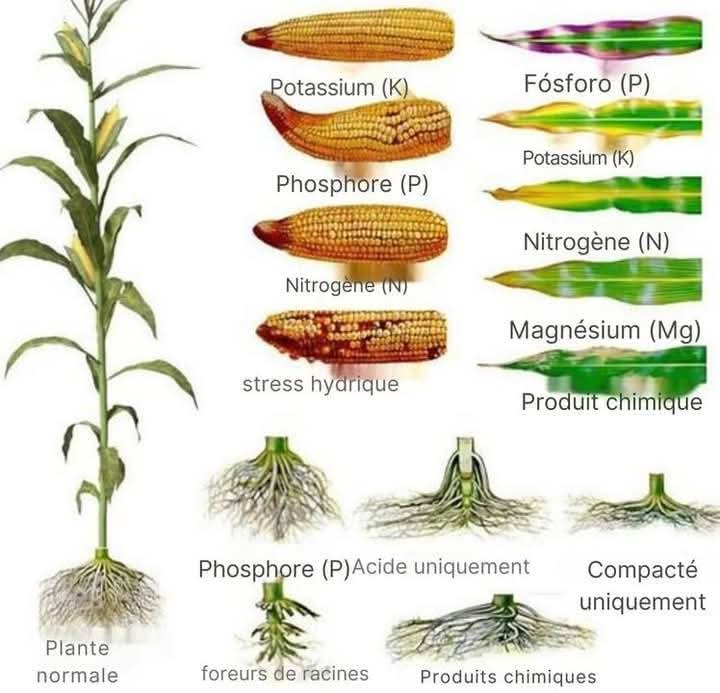Visual guide to the impact of nutritional deficiencies and adverse conditions on corn cultivation
- Nutrient deficiency (NPK)
Potassium (K): A potassium deficiency occurs in spikes containing poorly developed grains at the extremities, which reduces their yield. On the leaves, the lack of potassium results in yellow spots or chlorose appearing on the edges, which eventually turn brown.
Phosphorus (P): A deficiency in phosphorus results in small and deformed spikes. The leaves have purple or reddish coloration on the edges, indicating that the plant does not absorb enough phosphorus.
Nitrogen (N): Nitrogen is essential for leaf development and chlorophyll production. Its absence results in incomplete spikes and widespread yellowing of leaves, starting from the base to the tip.
Magnesium (Mg): A deficiency in magnesium causes yellowing between the veins of the leaves, while the veins remain green. This is known as internerval chlorose and affects the photosynthesis of the plant. - Water stress
Water stress is one of the most common factors affecting corn, especially in climates where rainfall is rare. Lack of water limits the development of spikes and causes uneven and little grains. Leaves can wither and in extreme cases, die. - Conditions of the soil itions
Phosphorus deficiency: A phosphorus-poor soil impairs root development, making them less expansive and less efficient at absorbing water and nutrients.
Acid Soil: In low pH (acid) soils, roots may experience reduced growth and a less robust root system, which limits the absorption of essential nutrients and affects plant stability.
Compact Soil: When soil is compacted, roots experience resistance to development, which limits the absorption of nutrients and water. This translates into less developed and less productive plants.
Chemicals: Excessive use of certain chemicals can damage the roots, making them less effective at absorbing nutrients and water. This affects the overall health of the plant
